Abstract
To facilitate the communication of ideas, orders and treatment plans among providers practicing in a multidisciplinary ambulatory care setting, we have created an event-directed messaging system integrated into our larger Ambulatory Care Information System (ACIS). ACIS has been operational since 1992 and currently supports an average of 350 patient visits per day. The new messaging system permits a provider to send a message to the next provider who will be caring for a patient. The messages can be sent to any provider offering care in the future, or they can be directed to future visits with a particular clinical service. In contrast to traditional electronic mail systems, messages are not directed to specific providers or groups of provider. Messages are instead directed to a specific clinical event, namely a patient's visit to an appropriate clinic. Messages are displayed when a patient returns for a designated visit, both as part of a pre-printed progress note upon which a provider documents the visit and as part of a hypertext-based general information display in an electronic medical record. The messaging system helps providers ensure that subsequent providers caring for their patients will be alerted to pertinent aspects of a patient's care. It also similarly helps providers quickly gain familiarity with those issues prior providers had felt were important to highlight or did not want to risk being overlooked.
Full text
PDF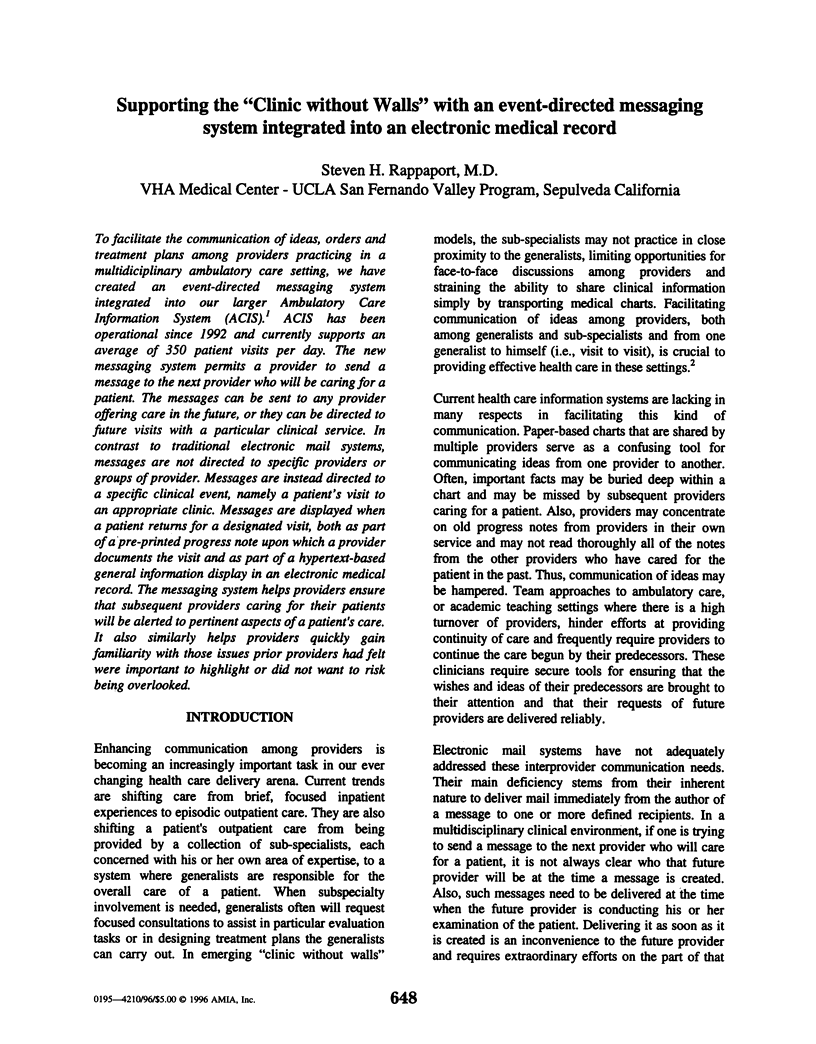
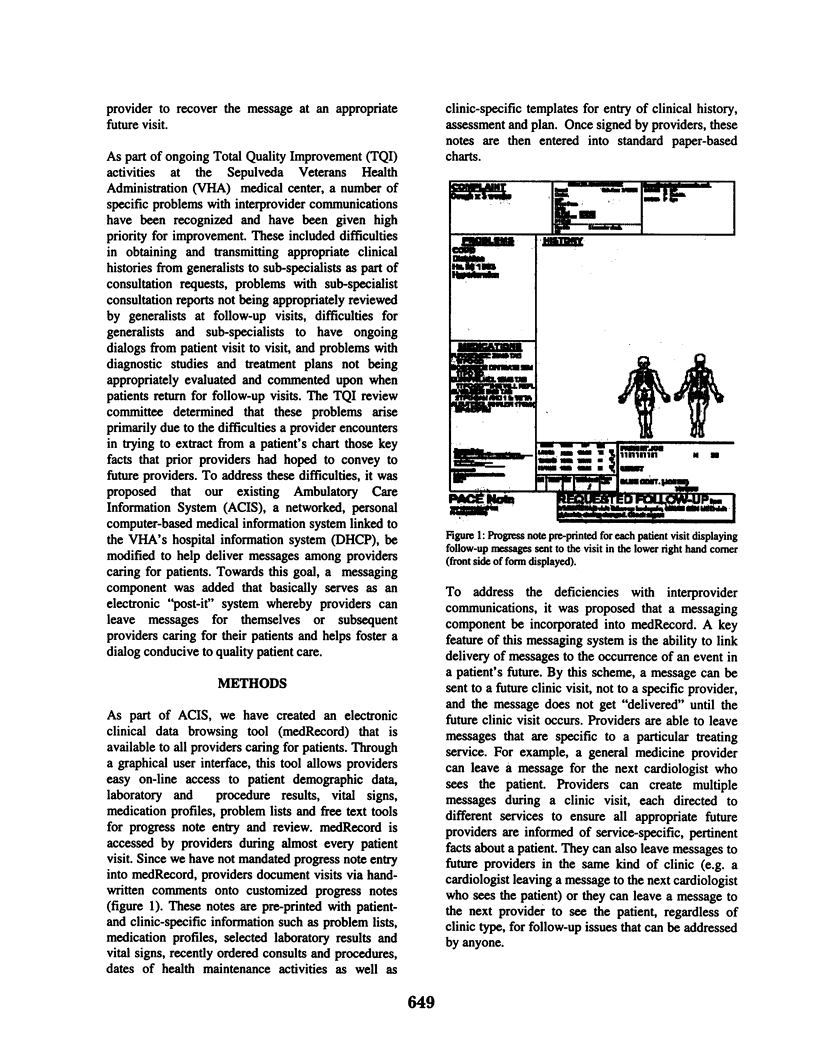
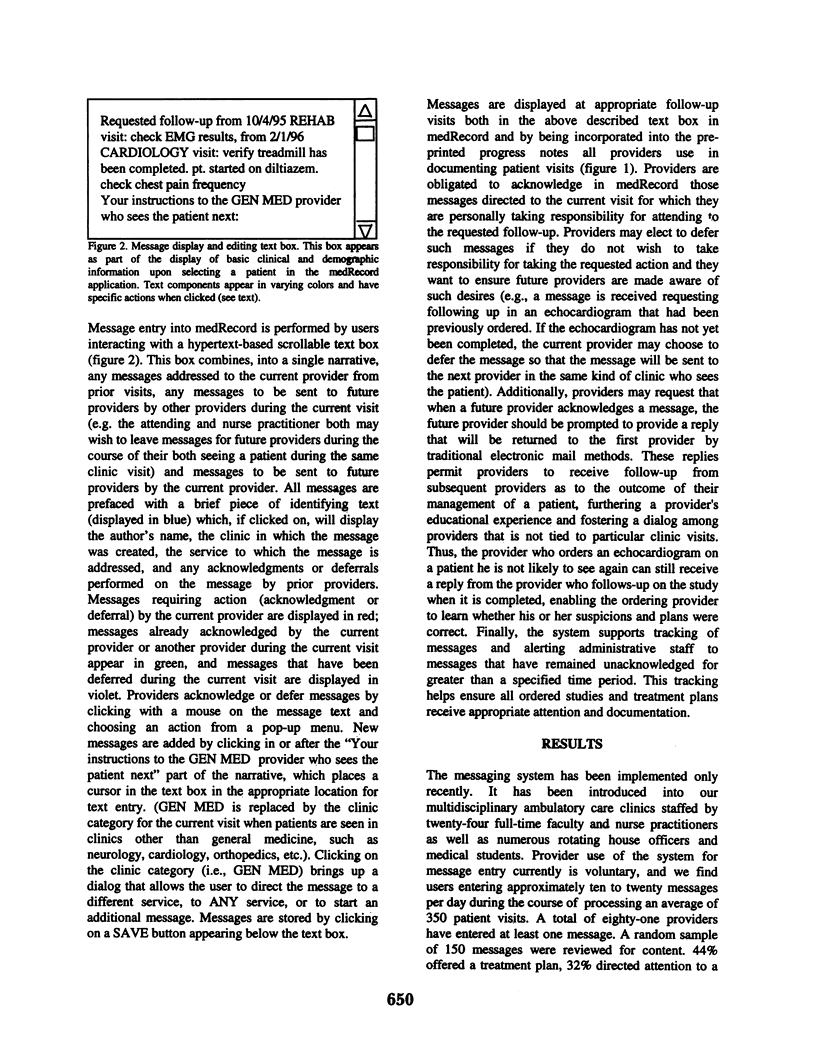
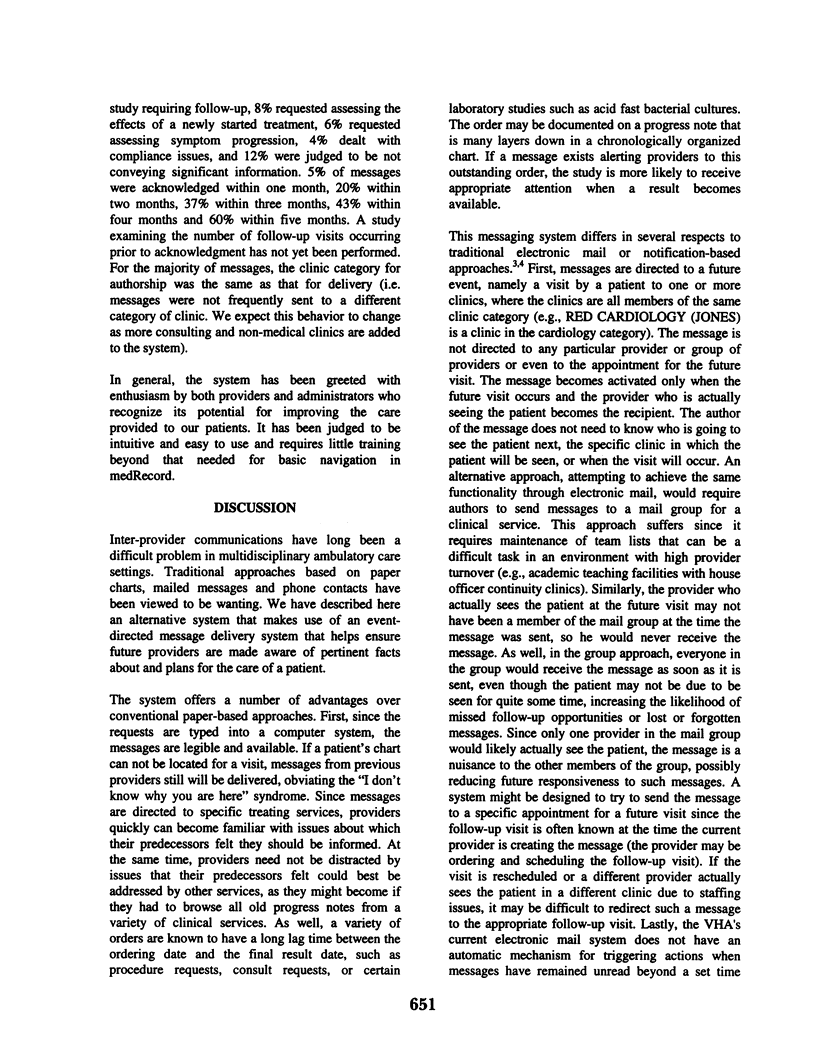
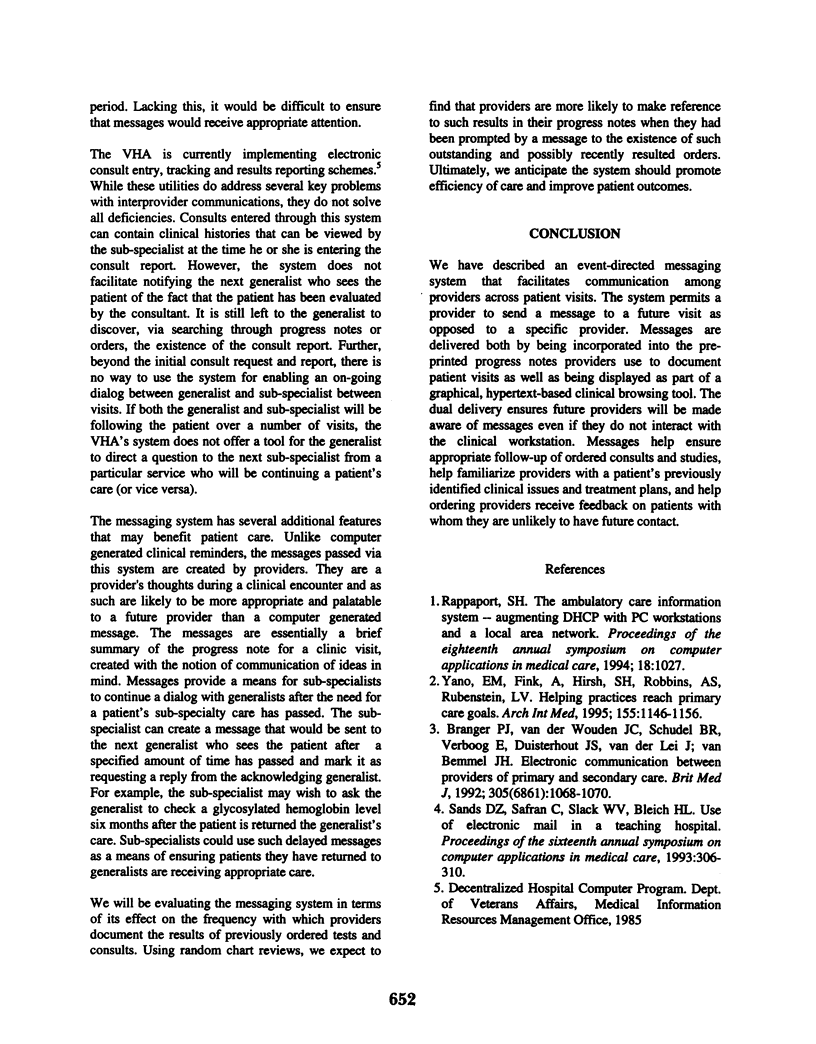
Selected References
These references are in PubMed. This may not be the complete list of references from this article.
- Branger P. J., van der Wouden J. C., Schudel B. R., Verboog E., Duisterhout J. S., van der Lei J., van Bemmel J. H. Electronic communication between providers of primary and secondary care. BMJ. 1992 Oct 31;305(6861):1068–1070. doi: 10.1136/bmj.305.6861.1068. [DOI] [PMC free article] [PubMed] [Google Scholar]
- Rappaport S. H. The Ambulatory Care Information System--augmenting DHCP with PC workstations and a local area network. Proc Annu Symp Comput Appl Med Care. 1994:1027–1027. [PMC free article] [PubMed] [Google Scholar]
- Sands D. Z., Safran C., Slack W. V., Bleich H. L. Use of electronic mail in a teaching hospital. Proc Annu Symp Comput Appl Med Care. 1993:306–310. [PMC free article] [PubMed] [Google Scholar]
- Yano E. M., Fink A., Hirsch S. H., Robbins A. S., Rubenstein L. V. Helping practices reach primary care goals. Lessons from the literature. Arch Intern Med. 1995 Jun 12;155(11):1146–1156. [PubMed] [Google Scholar]


